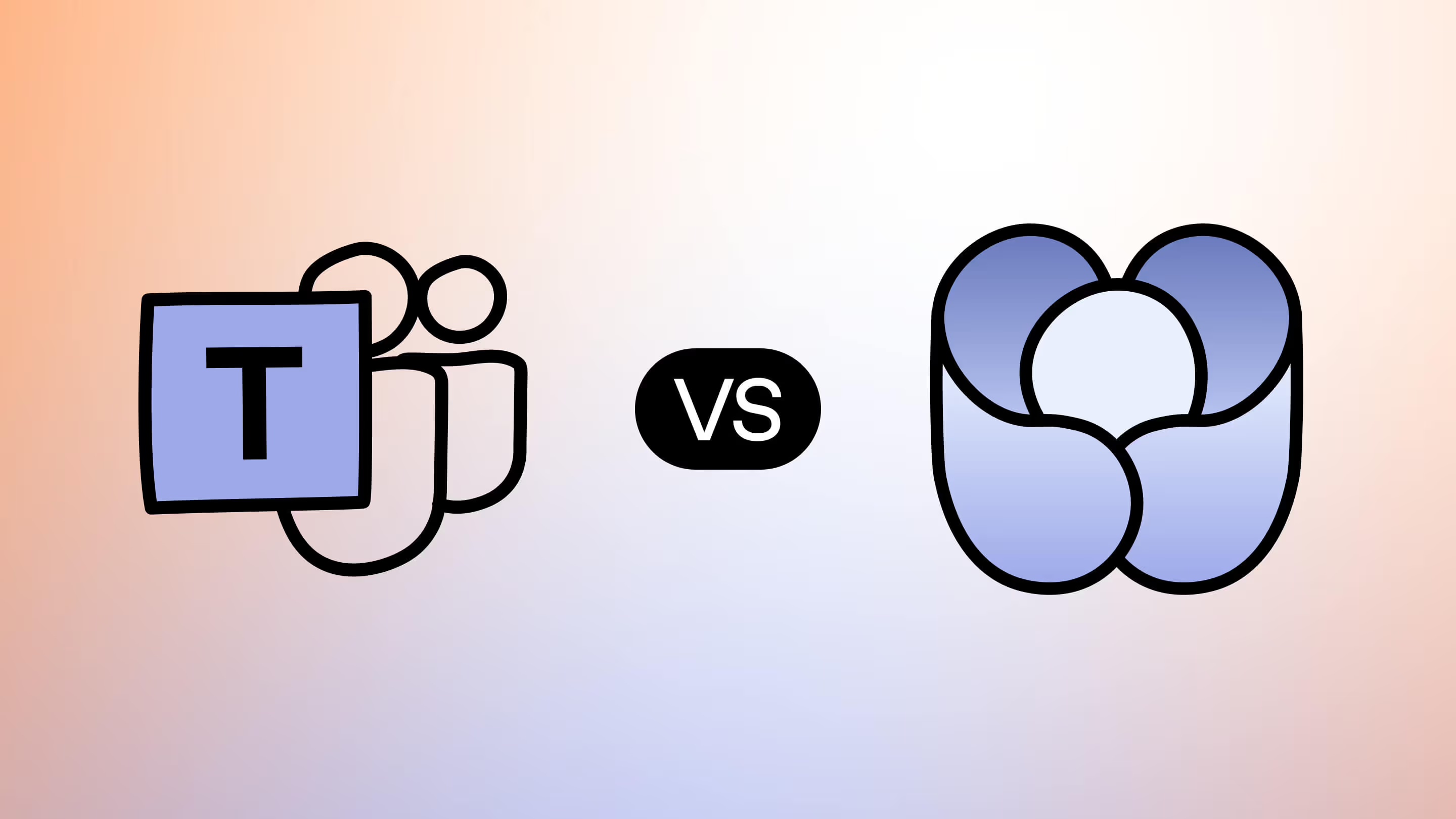Zoom vs. Microsoft Teams, what to consider

Table of contents
In the world of digital work, choosing the right video conferencing software is key. In this article we compare Zoom and Microsoft Teams to help you make the right choice to maximize communication across your organization.
So, which one deserves your department’s budget? In this comparison, we'll evaluate Zoom vs. Teams, take a closer look at some of the features that set them apart, and help you make the case for change in your organization.
Zoom vs. Microsoft Teams, a breakdown
* This increased in March 2022 and was previously 300. Both Zoom and Teams have webinar / event packages available that can host participants in the thousands. This is priced individually.
As you can see, little separates the two. But for end users, the devil is in the details. Let’s focus on the key differences between Teams and Zoom, and what they could mean for your organization.
Zoom vs. Teams - Which is more secure?
As you can see in the comparison table, Teams offers a more robust security package. While Zoom features password-protected meetings and end-to-end encryption, it is dwarfed by the might of Microsoft’s extensive security features.
At the core of this issue, Teams meetings requires a Microsoft account for all participants. This means that all participants have undergone multi-factor authentication and security checks before they even click ‘join’, whereas a basic Zoom meeting can essentially be accessed by anyone with a link.
Teams has also been engineered to adhere to strict compliance regulations in multiple sectors and regions. Achieving compliance for GDPR, HIPAA, and SOC ensures that your business can maintain good data management while also encouraging greater collaboration among colleagues.
1-0 for Microsoft Teams.
What are the storage options for Zoom vs. Teams?
As with most SaaS packages, the more you pay, the better the features you get. Zoom and Teams both offer more storage possibilities the more you spend with them. Zoom’s most expensive package will give you an unlimited amount of cloud storage, while Teams caps storage use at 10GB per licensed user, or 1TB per organization.
However, as Teams is a Microsoft application, there are obviously other options, such as BLOB storage, that you can take advantage of to ensure you don’t ‘clog up’ Teams.
This one has to go to Zoom, however a normal business user is unlikely to max out that 10GB storage limit - 2-1 to Microsoft Teams.
Collaboration: The heart of video conferencing
Cross- collaboration is at the heart of what businesses do. Working together to solve problems is the main part of almost every employee’s day. This is also what sets Teams apart from any other competitor. While tools like Zoom offer best-in-class features when it comes to storage, video quality, and integrations, they simply cannot compete with the overall collaboration features of Microsoft Teams.
Beyond a meeting and communication tool, Teams is its own ecosystem, connecting all the disparate dots of an organization and bringing them together. This is something that is simply out of reach for providers like Zoom.
A convincing win for Teams with this one - 3-1
Zoom vs. Microsoft Teams - the final scores
Obviously, different organizations have different needs, but for workspaces that are already using Microsoft 365, Teams is a no-brainer. It integrates seamlessly with almost any Microsoft program or app, it’s versatile, and it provides a strong hybrid collaboration space for remote and hybrid work.
While Zoom may be slightly easier to use (meaning less support is needed), and boasts more integrations, it struggles to compete with the wealth of tech behind Teams. This goes beyond simple video conferencing. What both of these tools are competing for is a similar chunk of your budget – and with Teams, all employees get more.
For the IT department, Teams represents greater control and visibility. With more administrative control through the Microsoft 365 admin center, it’s easier for IT to manage users, add and remove licenses, and keep everything running smoothly from one central hub. There are also fewer security issues to worry about.
Being able to collaborate remotely is a priority for most businesses. And for collaboration to be successful, your organization needs more than just a video conferencing tool. While both tools expand on the idea of traditional video conferencing tools with features like virtual whiteboards and breakout rooms, Zoom just isn’t the one-stop-shop for collaboration in the same way Teams is.
Make the most of Microsoft Teams
Choosing the right collaboration tool is a good start. But without the right management and governance, it’s easy for these tools to begin eating into your monthly budget and taking up more of your precious time.
ShareGate aims to solve these issues by doing the boring stuff for you. IT professionals are wasting their expertise on repetitive governance tasks and admin, when they could be revolutionizing the way their organizations work.
Our dedicated Teams Management platform gives IT professionals everything they need to keep on top of Teams usage in their organization. It features Teams management automations for those repetitive daily tasks and makes security a priority with automatic access and activity reviews.
To see ShareGate Teams management in action, book your 15-day free trial today.
.jpg)


.svg)
.avif)
%20(1).avif)
















